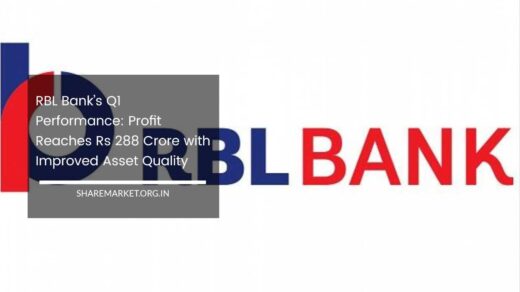LIC Q3 Results: Major Setback with Sharp Decline in Net Premium Income

LIC Q3 Results
LIC Q3 Results: A Tough Quarter for India’s Largest Life Insurance Company as Net Premium Income Drops and Profitability Struggles
The Life Insurance Corporation of India (LIC) has posted a mixed financial performance for the quarter ending December 2024, reflecting both promising and concerning developments.
While LIC’s standalone net profit saw an uptick, a significant decline in its net premium income raised concerns about the company’s growth prospects, casting a shadow over its otherwise strong standing as India’s largest life insurance provider.
This results update follows a volatile year for the company, with its stock price experiencing sharp fluctuations, further emphasizing the challenges LIC faces in a competitive and evolving insurance market.
Key Insights from LIC’s Q3 Financial Results
- Decline in Net Premium Income:
One of the most significant takeaways from LIC’s Q3 results is the 9% year-on-year decline in net premium income, which stood at ₹1,06,891 crore for the quarter ending December 2024. Net premium income is a critical indicator for life insurance companies, representing the difference between the total premiums collected from policyholders and the reinsurance costs. This metric is vital because it reflects the actual revenue generated by an insurance company through the sale of policies.A drop in this income suggests that LIC may be facing challenges in attracting new customers or retaining existing ones, which has led to reduced revenue from new policies. The contraction in premium income may also point to heightened competition in the sector, where new entrants and established players are vying for market share. Additionally, potential economic factors, such as inflation or consumer sentiment, could be contributing to reduced demand for life insurance policies.
- Standalone Net Profit Rise:
On a more positive note, LIC’s standalone net profit rose by 17% to ₹11,056 crore in the December quarter. This growth in profit, despite a dip in premium income, indicates that the company has been effective in managing its operating costs and investments, perhaps benefiting from better returns on its investment portfolio or improved operational efficiencies.However, the profit growth does come amid a broader decline in the company’s total income, which fell from ₹2,12,447 crore to ₹2,01,994 crore compared to the previous year. While LIC managed to improve its profitability, it remains clear that the company is not entirely immune to the challenges facing the broader insurance industry, including regulatory pressures, a challenging investment climate, and fluctuating consumer behavior.
- Stock Market Reaction:
The financial markets responded cautiously to LIC’s Q3 results. The company’s shares saw selling pressure leading up to the results, and by the end of the trading day, LIC’s shares closed at ₹815.95 on the Bombay Stock Exchange (BSE), marking a decline of 1.56%. During intra-day trading, the stock price even slipped to ₹810.00, reflecting a drop of 2.27% from the previous day’s closing price. This decline in share price is indicative of investor uncertainty, as market participants digested the mixed results and concerns around declining premium income.The performance of LIC’s stock in recent months highlights the broader challenges the company faces in maintaining investor confidence. The market’s reaction suggests that investors are cautious about LIC’s ability to deliver sustainable growth, especially given the declining premium income. It also raises questions about the insurer’s ability to successfully navigate a rapidly changing market, especially with newer, more digitally-savvy competitors entering the life insurance space.
LIC’s Stock Performance in the Last Year: A Roller Coaster Ride
The performance of LIC’s shares over the past year has been marked by significant volatility, reflecting the turbulent economic and business environment the company has had to navigate.
- Record High in August 2024:
On August 1, 2024, LIC shares reached a record high of ₹1,221.50, generating significant optimism among investors. This surge in stock price was likely driven by positive market sentiment towards LIC and the broader financial markets, as well as expectations of sustained growth from India’s largest life insurer. However, despite the strong performance, this high point would mark the end of a bull run for LIC, as the company began to face some headwinds in the following months. - Sharp Decline in January 2025:
By January 28, 2025, LIC shares had plunged to ₹804.60, a decline of more than 34% from the peak achieved in August. This represented the lowest point for LIC’s stock in the past year and highlighted a significant erosion of shareholder value in just six months. The reasons behind the steep decline could be multiple, including the declining premium income, concerns about future growth prospects, and broader market dynamics that have put pressure on the stock prices of several public companies.The sharp drop in stock price is also indicative of investor concerns regarding the broader regulatory and market environment in the life insurance sector. With an increasing number of new players offering innovative insurance products, traditional companies like LIC may be under more pressure to adapt and differentiate themselves.
- Partial Recovery:
Despite the dramatic fall, LIC’s stock has shown signs of recovery in recent weeks. After hitting a one-year low in late January, LIC shares gained around 1.5% on buying support, suggesting that some investors see value in the stock at these lower levels. However, the stock is still down by around 33% from its high in August 2024, indicating that, despite some investor optimism, LIC’s prospects remain uncertain in the face of ongoing challenges.
Outlook and Challenges Ahead
While LIC remains India’s largest and most established life insurance company, the results from Q3 2024 show that it is not immune to the pressures of an increasingly competitive and dynamic market. A few key challenges and considerations for the company in the near term include:
- Intensifying Competition: The Indian insurance market is becoming more crowded, with a growing number of private and digital-first insurers offering innovative products and flexible distribution models. LIC must find ways to differentiate itself, especially as consumer preferences shift towards digital and tech-driven solutions.
- Changing Consumer Behavior: Consumer preferences are evolving, with an increasing focus on term insurance, health insurance, and digital solutions. LIC will need to adapt its product offerings and distribution channels to meet changing demands and preferences if it is to retain market leadership.
- Regulatory Challenges: The insurance sector is subject to significant regulatory oversight, and any changes in regulations or compliance requirements could have an impact on LIC’s operations and profitability. Navigating these changes while maintaining profitability will be crucial for the company’s long-term success.
- Investment Portfolio Management: Given LIC’s large investment portfolio, fluctuations in the equity markets and interest rates will continue to play a crucial role in the company’s profitability. Effective management of its investment assets, especially in volatile market conditions, will be vital to sustaining profit growth.
Final Remarks
The third-quarter results for LIC illustrate the complexities facing India’s largest life insurer. While the company managed to increase its profits, the significant drop in net premium income is concerning and suggests that LIC may face challenges in sustaining growth in the coming months.
The performance of its stock reflects this uncertainty, as investors have responded cautiously to the mixed results.
Going forward, LIC will need to innovate, adapt to market changes, and address the pressures from a competitive insurance landscape.
By enhancing its product offerings and embracing digital transformation, the company could position itself for a more prosperous future, despite the current challenges it faces.

















